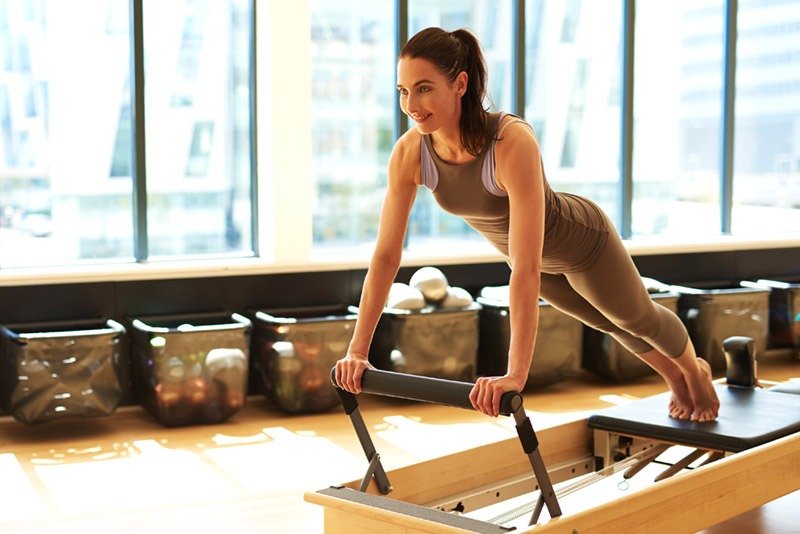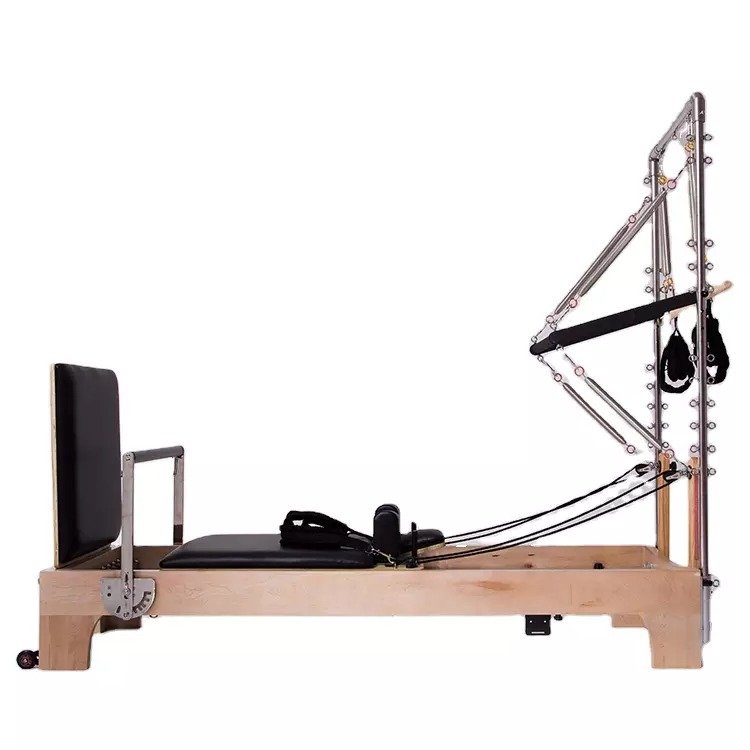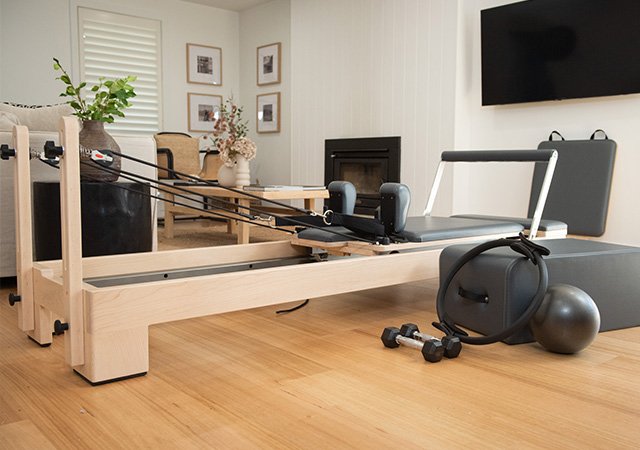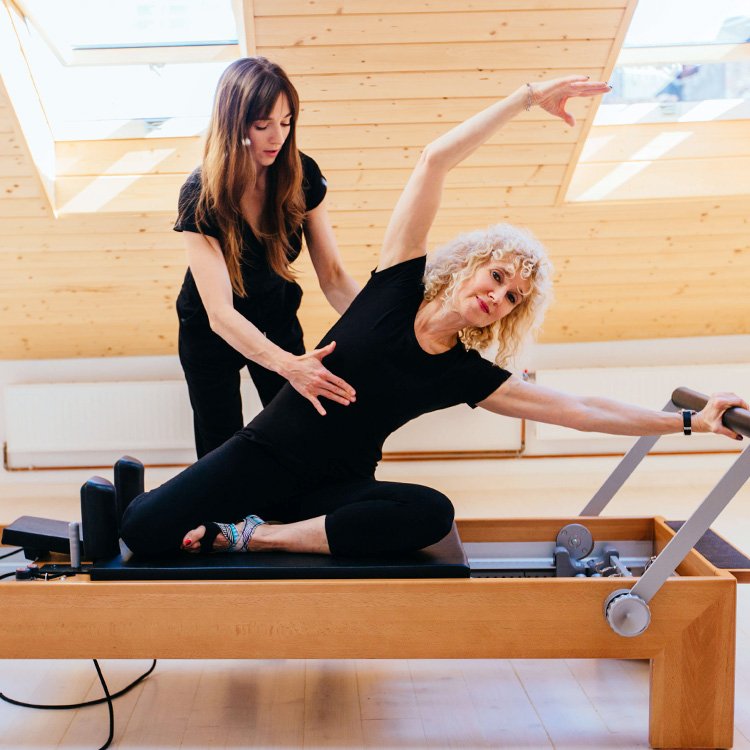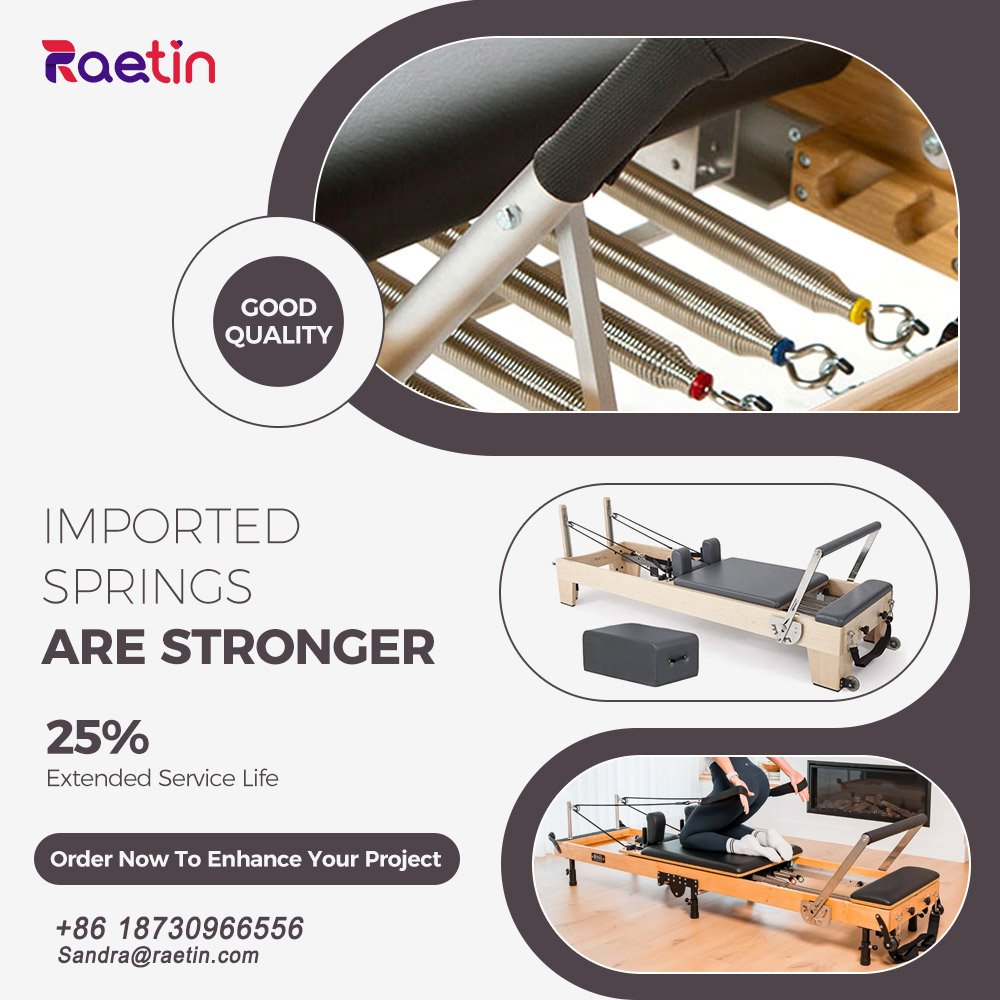
Introduce
Pilates, a form of exercise developed by Joseph Pilates in the early 20th century, has become a popular method for improving core strength, flexibility, and overall physical health. The Pilates bed, more commonly known as the Reformer, is one of the key pieces of equipment used in this practice. It consists of a sliding platform (carriage) that moves along a set of rails, with resistance provided by springs. The carriage is attached to the end of the frame by cords, which can be pulled by hands or feet, adding to the variety of exercises that can be performed.
The Reformer offers a unique way to engage muscles through controlled, flowing movements, making it an effective tool for rehabilitation, fitness, and body conditioning. This article will explore how the Pilates bed can contribute to flattening the stomach, compare it to yoga, discuss its pros and cons, consider if it can be the sole workout, explain why one might feel sick after a session, and estimate the time it takes to see results from regular use.
How Does the Pilates Bed Help Flatten Your Stomach?
The Pilates bed, or Reformer, is particularly effective for targeting the abdominal muscles due to the nature of the exercises and the support provided by the equipment. Here’s how it works:
Core Engagement
Most exercises on the Reformer require you to stabilize your core, which includes the deep abdominal muscles, the obliques, and the lower back. Consistent engagement of these muscles leads to increased strength and tone.
Resistance Training
The springs provide adjustable resistance, allowing for a tailored workout that challenges the muscles. This resistance helps to build lean muscle mass, which can increase metabolic rate and promote fat loss, including around the midsection.
Controlled Movements
The slow, controlled movements typical of Pilates help to ensure that the correct muscles are being engaged, rather than relying on momentum, which can lead to better toning and definition of the abs.
Full-Body Workout
While the focus may be on the core, the Reformer also provides a full-body workout, contributing to overall weight loss and improved body composition, which can result in a flatter stomach.
Is the Pilates Bed Better Than Yoga?
Comparing the Pilates bed (Reformer) to yoga isn’t a matter of one being superior; rather, it depends on individual goals, preferences, and needs. Both practices offer unique benefits and can complement each other well.
Focus and Benefits
- Yoga: Emphasizes flexibility, balance, and relaxation. It can improve mental clarity, reduce stress, and enhance mindfulness. Yoga typically uses bodyweight and gravity for resistance, and while it does strengthen the body, the emphasis is often on lengthening and stretching.
- Pilates Bed: Concentrates on core strength, posture, and alignment. The Reformer allows for more targeted resistance training, which can be adjusted to suit different fitness levels. It’s excellent for building strength, especially in the core, and improving muscular endurance.
Adaptability
- Yoga: Can be adapted to various styles and intensities, from gentle restorative classes to more dynamic Vinyasa flow.
- Pilates Bed: Offers a wide range of exercises that can be modified to accommodate beginners as well as advanced practitioners. The resistance level can be easily adjusted, making it suitable for people of all fitness levels and for those recovering from injuries.
Mind-Body Connection
Both disciplines emphasize the mind-body connection, though they approach it differently. Yoga often incorporates meditation and breathwork, fostering a deeper sense of inner peace and awareness. Pilates focuses on precise movement and control, enhancing concentration and body awareness.
Ultimately, the choice between the two should be based on personal goals, such as whether one is looking for a more meditative experience, greater flexibility, or specific strength and core conditioning. Many individuals find that incorporating both into their routine provides a well-rounded approach to fitness and wellness.
Pros and Cons of Using the Pilates Bed
- Versatility: The Reformer allows for a diverse range of exercises, catering to different parts of the body and various fitness goals.
- Adjustable Resistance: The spring-loaded system provides variable resistance, which can be tailored to individual needs, making it suitable for all fitness levels.
- Effective Core Strengthening: The design of the Reformer emphasizes core stability and strength, which is beneficial for improving posture, balance, and overall physical function.
- Low Impact: Pilates on the Reformer is low-impact, reducing the risk of injury and making it a good option for people with joint issues or those recovering from injuries.
- Improved Alignment and Posture: The exercises on the Reformer encourage proper alignment and can help correct postural imbalances, leading to better biomechanics and reduced pain.
- Cost and Accessibility: A high-quality Reformer can be expensive, and not all gyms or studios have them available. For home use, the cost and space required can be prohibitive.
- Learning Curve: There is a learning curve associated with using the Reformer, and some of the movements can be complex. Proper instruction is necessary to ensure safe and effective use.
- Limited Cardiovascular Benefits: While the Reformer is excellent for strength, flexibility, and core work, it doesn’t provide significant cardiovascular exercise. To achieve a balanced fitness regimen, additional aerobic activities would be needed.
- Potential for Overuse Injuries: If not performed correctly, the repetitive nature of some Pilates exercises can lead to overuse injuries, particularly in the shoulders, hips, and lower back.
Can the Pilates Bed Be My Only Workout?
While the Pilates bed (Reformer) is a highly effective piece of equipment for many aspects of fitness, it may not be sufficient as the only form of exercise for a comprehensive fitness program. Here’s what to consider:
Strength and Flexibility
The Reformer is excellent for developing strength, particularly in the core, and improving flexibility. However, it may not provide the same level of upper body or leg strength that free weights or other forms of resistance training can.
Cardiovascular Fitness
The Reformer is not designed for cardiovascular training. To maintain heart health and burn calories efficiently, it’s important to include some form of cardio, such as running, cycling, swimming, or even brisk walking.
Balance and Coordination
While the Reformer does help with balance, certain types of exercises, like those found in yoga or functional training, can further enhance these skills.
Bone Density
Weight-bearing exercises, such as walking, running, or resistance training with heavier weights, are crucial for maintaining bone density, which is something the Reformer alone may not sufficiently address.
For a well-rounded fitness routine, it’s recommended to combine the use of the Pilates bed with other forms of exercise. This could include cardiovascular workouts, strength training, and possibly some flexibility and mobility work, such as yoga or stretching. By diversifying your workout, you can address all aspects of fitness and reduce the risk of overuse injuries.
Why Do You Feel Sick After Pilates?
Feeling unwell after a Pilates session, whether on the Reformer or mat, can be disconcerting, but there are several reasons why this might occur:
Dehydration
Intense exercise, especially in a heated environment, can cause dehydration, which may lead to symptoms such as dizziness, nausea, or headache. Always ensure you’re properly hydrated before, during, and after your workout.
Overexertion
Pushing yourself too hard, especially if you’re new to Pilates or returning after a break, can lead to exhaustion and a feeling of sickness. It’s important to listen to your body and progress at a pace that is comfortable for you.
Hyperventilation: Deep, rapid breathing during the workout, if not done correctly, can sometimes lead to hyperventilation, which may cause lightheadedness and nausea.
Empty Stomach
Exercising on an empty stomach can sometimes lead to discomfort, including nausea. Try having a light snack, such as a banana or a small serving of yogurt, about an hour before your session.
Underlying Health Issues
If you consistently feel sick after Pilates, it could be a sign of an underlying health issue. Consult with a healthcare provider to rule out any medical conditions.
To minimize the risk of feeling unwell, start slowly, stay hydrated, and eat appropriately. If you continue to experience discomfort, it’s wise to speak with a fitness professional or a healthcare provider.
How Long Does It Take to See Results from Using the Pilates Bed?
The timeline for seeing results from using the Pilates bed (Reformer) can vary widely depending on several factors, including your starting fitness level, consistency, intensity of the workouts, and your nutritional habits. Here’s a general guide to what you might expect:
- Initial Improvements (1-4 Weeks): Within the first few weeks, you may notice improvements in your posture, balance, and flexibility. You may also feel stronger, particularly in your core, and have a greater sense of body awareness.
- Visible Changes (4-8 Weeks): As you continue to train, you may begin to see more visible changes, such as improved muscle tone, especially in the abdomen, legs, and arms. You might also start to see a reduction in waist circumference as your core becomes stronger and more defined.
- Significant Progress (8-12+ Weeks): After a couple of months, if you’ve been consistent with your workouts and have paired them with a healthy diet, you may notice more substantial changes in your body composition. This can include increased muscle definition, improved posture, and potentially a drop in body fat percentage, leading to a flatter, more toned appearance.
It’s important to remember that everyone’s body responds differently to exercise, and patience is key. Regularity and quality of the workouts, as well as lifestyle factors such as sleep, stress management, and nutrition, play a significant role in the outcomes. Setting realistic expectations and celebrating small victories along the way can help keep you motivated as you progress toward your fitness goals.
In Conclusion
The Pilates bed, or Reformer, is a versatile and effective tool for improving core strength, flexibility, and overall physical health. While it can be a powerful aid in achieving a flatter stomach, it is just one part of a comprehensive fitness and wellness plan. When compared to yoga, the Reformer offers a more focused approach to strength and core conditioning, whereas yoga excels in flexibility, balance, and mental well-being. Each has its own unique benefits, and many individuals find value in combining both practices.
Using the Pilates bed comes with its own set of advantages, such as versatility, adjustable resistance, and a focus on core strengthening, but it also has limitations, such as cost, a learning curve, and limited cardiovascular benefits. It can be an integral part of a well-rounded fitness routine, but it’s best when supplemented with other forms of exercise for a holistic approach to health.
If you experience discomfort or sickness after a Pilates session, it’s important to identify the cause and take appropriate steps to prevent it. Lastly, the time it takes to see results varies, but with consistent effort and a balanced lifestyle, you can expect to see positive changes in your body and overall fitness. Whether you’re a seasoned practitioner or a newcomer, the Pilates bed can be a valuable addition to your fitness journey.


